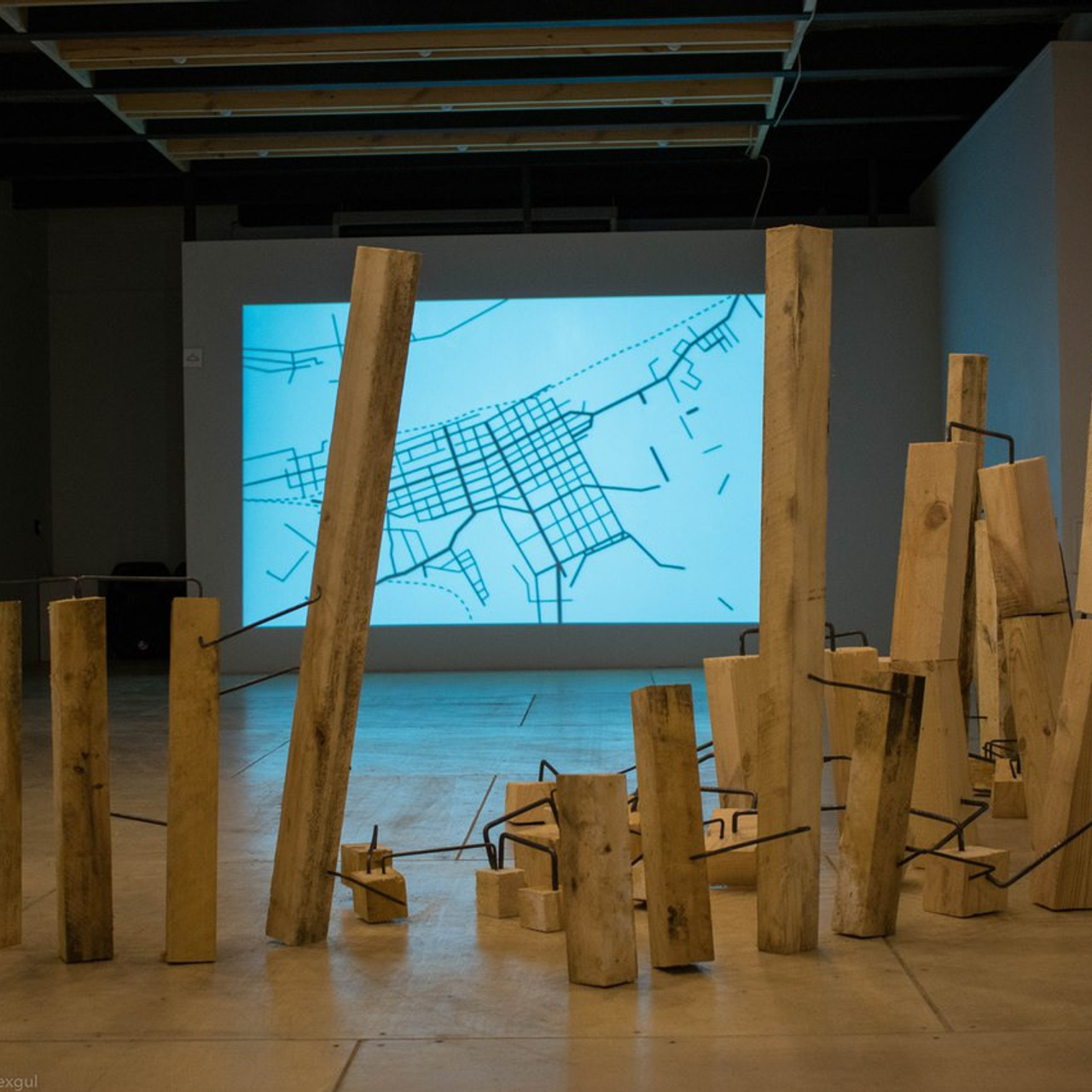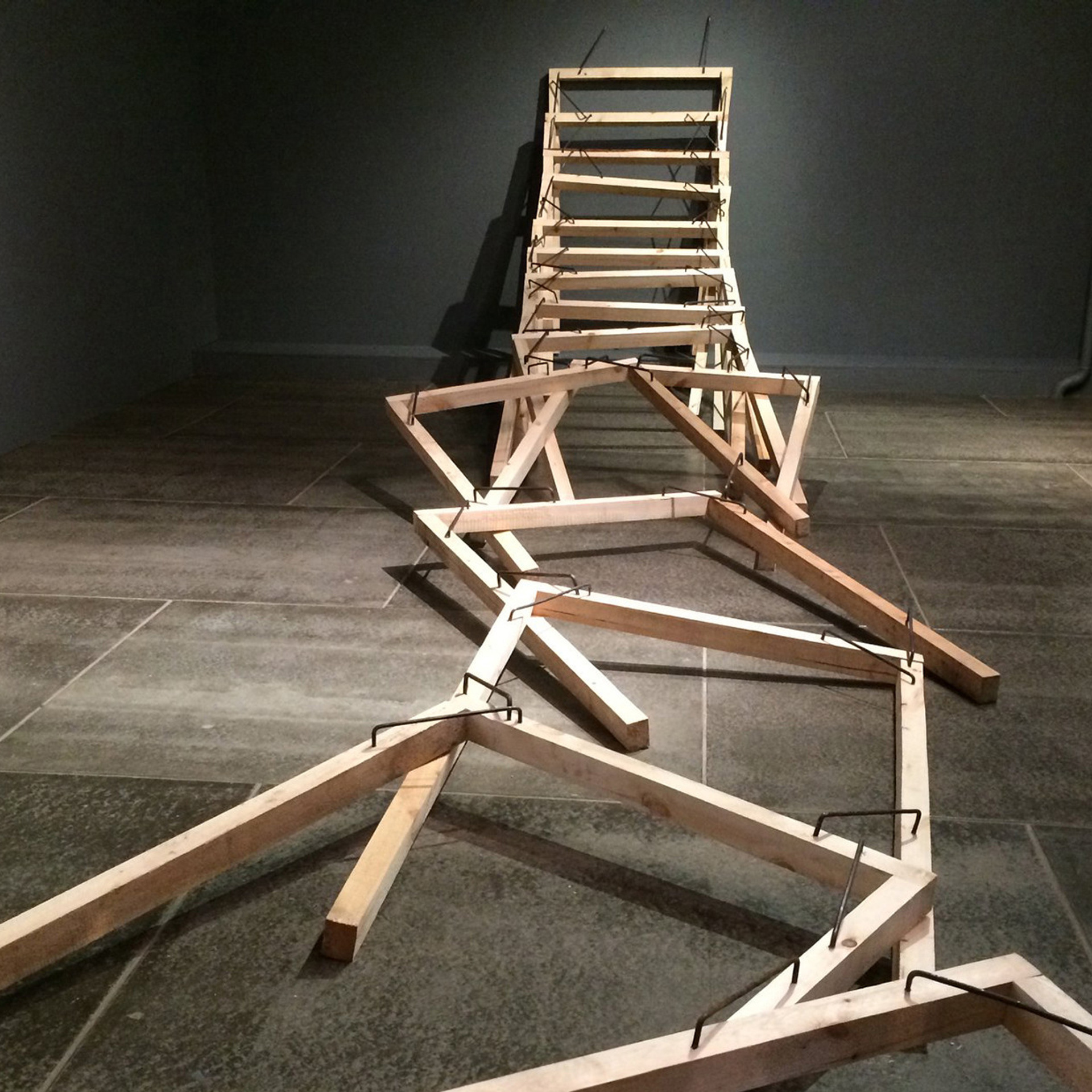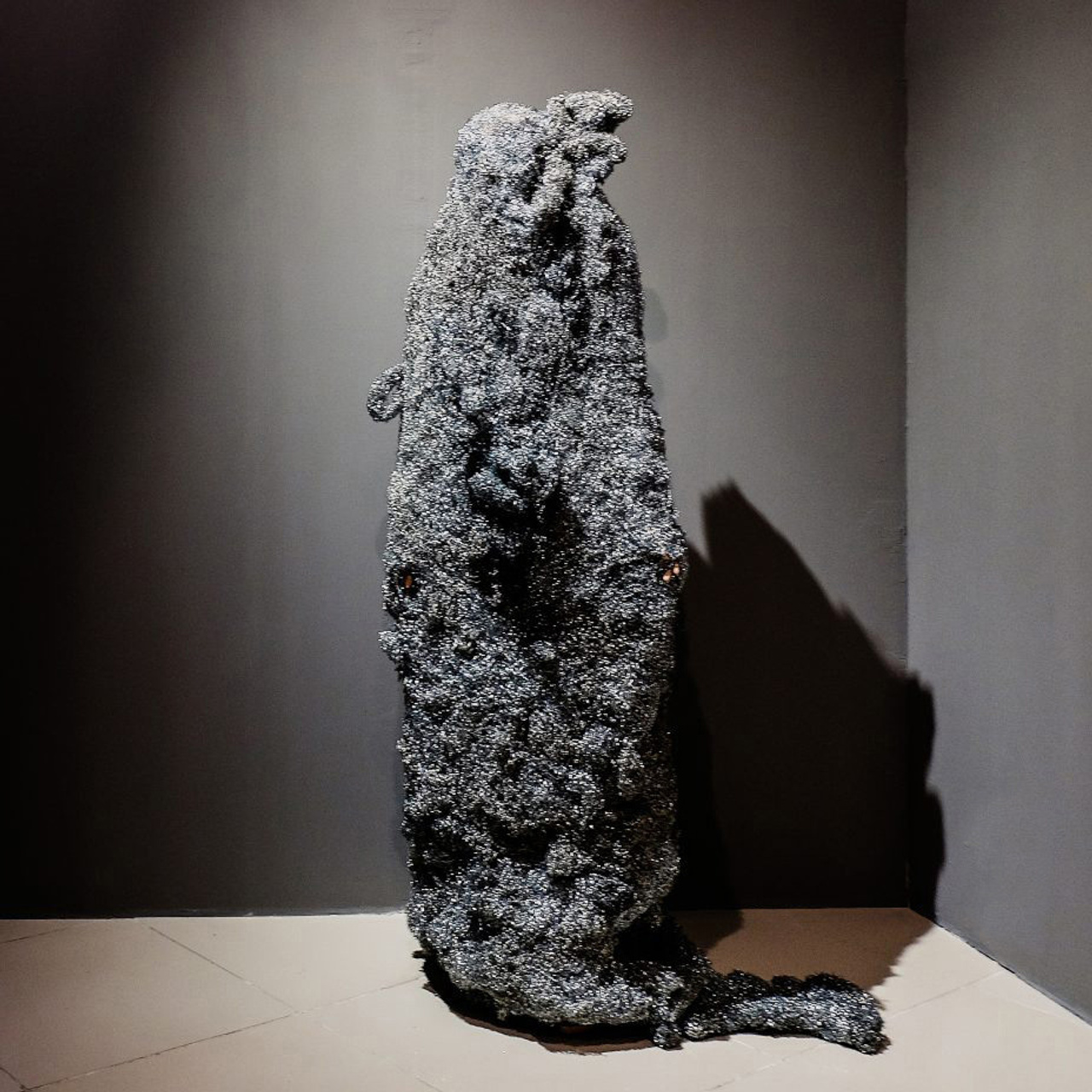Reassembly, an upcycle project, 2022
Broken discarded dishware, metal staples, metal rod, a found metal flower support (the last photo), glue
Curatorial text — by Teona Yamanidze
Kintsugi (an upcycle)
The urge to know about the damage and to look for ways to mend/to heal is what guides Elena Slobtseva’s artistic practice. Most of her work is largely material-based. By using discarded broken or damaged crockery that she has collected during her stay at Kachreti, Elena is trying to re-examine the notion of trauma and detachment to personal memories in her residency project.
The concept of Kintsugi has a major influence on Elena’s work. Kintsugi is a Japanese art of repairing broken pottery by mending the areas of breakage with lacquer dusted or mixed with powdered gold, silver, or platinum” (Wikipedia). It’s a meditative and beautiful practice with the function of a broken object retained. Besides kintsugi, throughout the history of mankind, there were other ways to mend ceramics, one of which was by drilling broken pieces and then connecting them with the help of staples. Adhesives were also used in this mending technique.
Elena has been reproducing the mending process that has become part of her current installation. The opposite of the absurd mending the artist is reproducing would be, for example, to redistribute broken dishware, kintsugi as a costly and time-consuming practice would not be rational in times of mass production. It is also a fact that ceramics are hardly recyclable today, like concrete it is usually buried. Humanity can be callous and wasteful, but we often form attachments to things. Can connecting with sentimentality help encourage awareness?
It is important for Elena to leave the title “Kintsugi '' to what seems to be its opposite — the barbaric and violent act, as it is through this curtain language, those lies are asserted and reality is labeled with fake concepts through propaganda.
slobtseva.com/kintsugi — a page on the residency where the experiments on 'kintsugi' took place



















